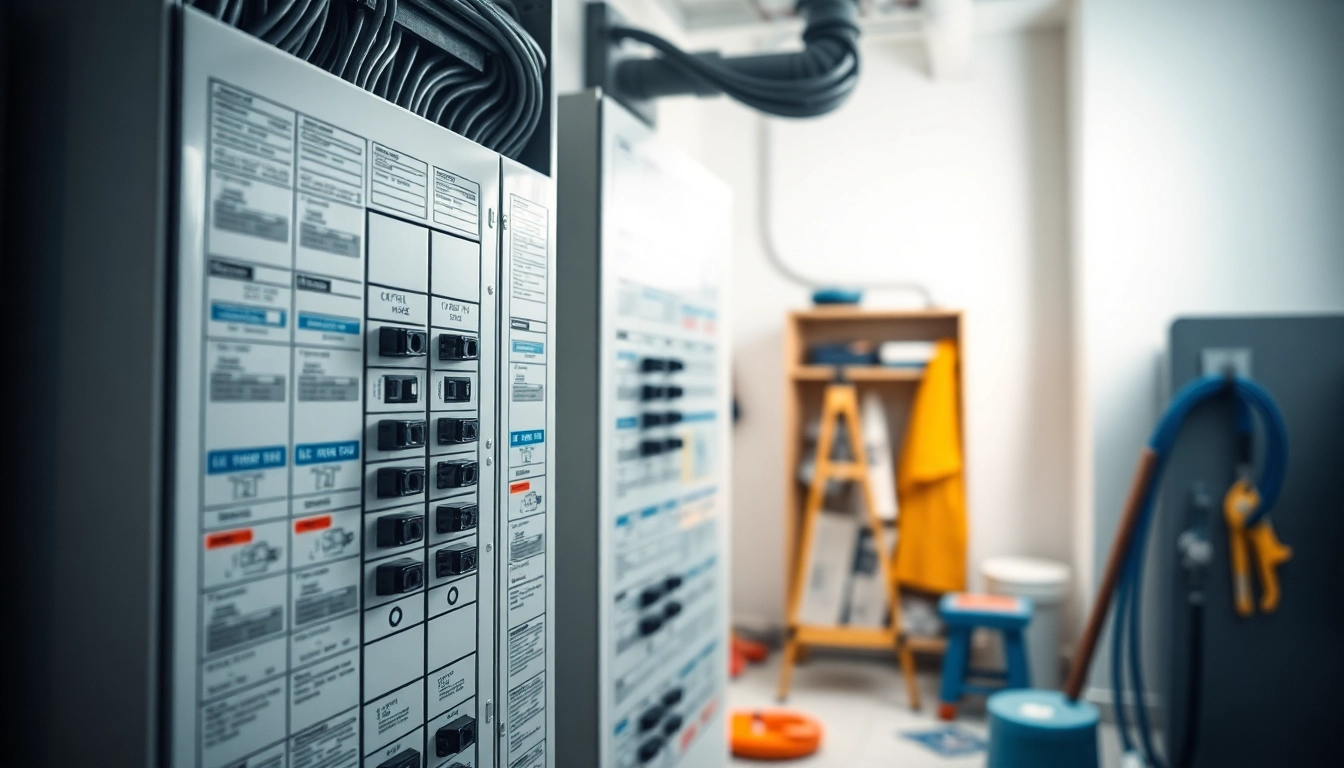Understanding Electrical Panels
An electrical panel, often referred to as a breaker box, is the heart of your home’s electrical system, facilitating the distribution of electricity throughout the property. It serves as a central hub, managing and controlling the flow of electrical power to various circuits and appliances within a residence. Understanding the functionality and importance of your electrical panel is crucial for maintaining home safety, efficiency, and performance. For homeowners contemplating upgrades, knowing when to take action—and what choices to make—can mean the difference between minor inconveniences and major safety hazards. Discussing the Electrical Panel elements will empower you to stay ahead of potential issues.
What is an Electrical Panel?
In essence, an electrical panel is a metal box that houses the circuit breakers or fuses that serve various circuits in your home. These circuits are made up of the wires that deliver electricity to different outlets, light fixtures, and appliances. An electrical panel connects the home’s electrical system to the utility company’s supply and typically consists of a main breaker that shuts power off for the entire house as well as individual breakers that protect each circuit.
Components of an Electrical Panel
An electrical panel contains several key components, each playing a vital role in maintaining the safety and efficiency of the electrical system:
- Main Breaker: This component provides an over-current protection mechanism that can shut off power to the entire house.
- Circuit Breakers: These protect individual circuits by breaking the current flow in case of overloads or shorts, preventing fire hazards.
- Bus Bars: Metal bars that distribute electricity to the different breakers within the panel.
- Grounding System: This diverts any excess electricity away from the circuits and into the ground, protecting both the system and the people using it.
- Neutral Bus Bar: This connects the neutral wires from the various circuits, ensuring there is a return path for electricity.
Types of Electrical Panels
There are primarily three types of electrical panels used in residential installations:
- Conventional Panels: Also known as breaker panels, these are the most commonly used systems for residential applications.
- Sub-Panels: These are smaller panels, connected to the main panel, and used to manage power in separate areas of a home or in specific applications.
- Smart Panels: Technology-enhanced panels that may include features for energy management or monitoring usage down to individual circuits.
Signs You Need an Upgrade
Recognizing when your electrical panel requires upgrading is essential to ensuring safety and functionality in your home. Below are key indicators to watch for:
Common Indicators of Electrical Panel Issues
Homeowners may face several signs that indicate the necessity for an upgrade:
- Frequent circuit breaker trips, signifying an overloaded system.
- Burning smells or signs of scorch marks around the panel, indicating potential hazards.
- Dim or flickering lights when using multiple electrical devices.
- Old or outdated panel models, especially those over 20 years old, which may not meet current electrical codes.
- Cloudy or Corroded Panels: Any visible corrosion or discoloration is a strong signal of malfunction.
Safety Hazards of Outdated Panels
Outdated electrical panels pose significant safety threats, including fire risks and electrical shock hazards. Older panels, particularly those made by discontinued or less reputable brands, often lack modern safety features required by current codes. Ensuring that your panel meets contemporary standards is crucial for protecting your home and family.
Efficiency and Energy Considerations
As energy demands increase with modern appliances and technology, an outdated panel may struggle to meet these requirements. Insufficient energy capacity can lead to inefficiency, resulting in higher energy bills, not to mention the potential overloading consequences. A new, properly rated electrical panel can optimize energy distribution in your home.
Choosing the Right Electrical Panel
When selecting an electrical panel, homeowners must consider various factors to ensure they make a well-informed decision:
Factors to Consider When Buying
Several factors should influence your choice of electrical panel:
- Load Capacity: Assess the expected load your home will demand, considering all current and future electrical needs.
- Brand Reliability: Familiarize yourself with different brands and models; trusted names typically offer longer warranties and better service.
- Type of Panel: Choose between conventional, smart, or sub-panels based on your specific situation.
- Regulatory Compliance: Ensure any panel you consider complies with local and national building codes.
Comparing Different Brands and Models
Researching various brands and models is essential. Brands like Square D, Siemens, and Eaton are recognized for their reliability and excellence in customer service. User reviews and expert evaluations can provide valuable insights into the best choices available in the market.
Balancing Cost and Quality
While it’s tempting to choose the lowest-priced option, investing in a higher quality electrical panel may save money in the long run by reducing energy costs and minimizing the need for repairs. Quality panels can also enhance safety and efficiency, considerably outweighing initial savings.
Installation and Upgrading Process
When it comes to upgrading your electrical panel, several steps and considerations play a crucial role in ensuring a successful installation:
Hiring a Professional Electrician
Engaging a licensed electrician is often the best course of action when upgrading your electrical panel. A professional will ensure compliance with all safety regulations, perform the installation correctly, and manage any required permits or inspections. When selecting an electrician, check for credentials and references, and ensure they are experienced with panel installations.
Do-It-Yourself Steps and Precautions
For the more experienced DIY enthusiasts, upgrading an electrical panel can be a manageable task, though it comes with risks. Key precautions include:
- Always turn off the main power before starting work.
- Ensure you understand wiring codes and the specific requirements for your panel.
- Maintain a clear workspace to avoid accidents.
- Have a qualified professional review your work.
Permits and Regulations You Must Follow
Each locality has distinct regulations regarding electrical installations, usually requiring permits. It’s essential to familiarize yourself with local codes to ensure safe and legal work, preventing costly fines or safety hazards in the future.
Maintenance and Troubleshooting
Regular maintenance and troubleshooting are paramount for the effective operation of electrical panels. Neglecting this can lead to severe safety and financial ramifications:
Routine Maintenance Tips for Electrical Panels
To maintain an electrical panel’s efficiency, consider these routine checks:
- Inspect for any signs of corrosion or moisture buildup.
- Check all circuit breakers for proper function; ensure they reset correctly.
- Keep the area around the panel clear for safety and accessibility.
Identifying Common Problems
Problems with electrical panels can often present clear signs:
- If breakers are frequently tripping, assess what circuits are being overloaded.
- Buzzing sounds or strange odors from the panel might indicate a severe issue needing immediate attention.
When to Call for Professional Help
When in doubt, always seek a professional. Common situations that warrant an electrician include:
- Frequent breaker tripping affecting the overall function.
- Signs of overheating or melting around wires or breakers.
- Additions to your electrical load that outpace panel capacity.


